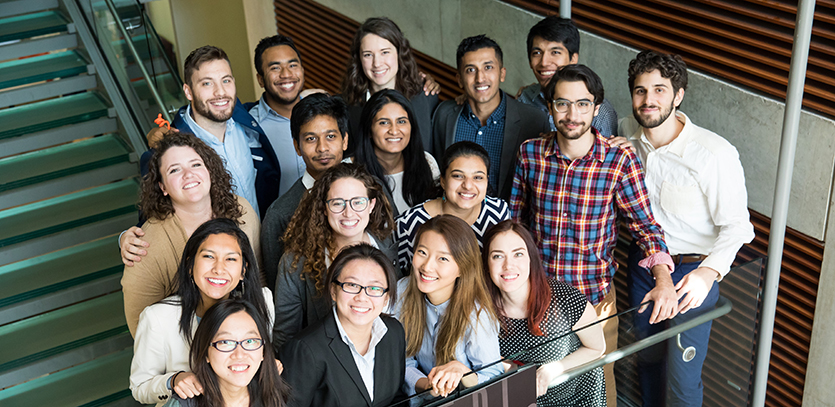Growth on Display
17 graduate students present projects at 2017 EDI Thesis Show
Just a few years ago, Sasha Mitts didn't know there was a place for his talents and interests in the design field.
A philosophy and neuroscience double major as an undergraduate at Oberlin College, Mitts had long been curious about the intersection of seemingly disparate fields. When he discovered human-centered design, he found a perfect match for his omnipresent curiosity.
"I've always wanted to understand how things might work better,” says Mitts, who enrolled in Northwestern University's Master of Science in Engineering Design Innovation (EDI) Program in mid-2016.
On December 8 at the Ford Motor Company Engineering Design Center, Mitts put his growth as a fledgling designer on display alongside 16 of his fellow graduate students at the 2017 EDI Thesis Show, the culmination of the students' 18-month academic adventure.
The two quarter-long thesis project challenges students to apply newly learned skills and methods to a self-selected venture. Receiving guidance from faculty or industry mentors, students develop their respective projects from initial design and building prototypes to various iterations and market testing in preparation for final unveiling at the thesis show.
"With their thesis projects, our graduating students show who they are, what they've learned and how they solve problems. They also demonstrate capabilities relevant to their professional trajectories," EDI Program associate director Amy O’Keefe says.
From kitchen gadgets and a makeup app to a Bluetooth accessory for bike couriers and fitness-boosting technologies, there was no shortage of energy as students presented their final projects and reflected on their EDI journey.
Hua Chin, who studied mechanical engineering before working as a design engineer, entered the EDI program eager to better understand design for the end user. With her final project called Knome, a smart metronome devised to motivate young children to practice piano, Chin immersed herself in user needs through interviews, observation, and research. She later synthesized that research and discovered common themes that propelled her design, subsequent research, and various iterations.
"Because of this experience [developing Knome], I feel much more confident in the design process and my ability to drive a product to an end result," Chin says.
In showing tEQ, her physical tool that enables visually impaired musicians to do equalization using industry standard software, Aarushi Karimpanal says the EDI program challenged her to think about designing for an extreme user on the pathway to developing a product for a more mainstream audience.
"When you start with that extreme user, you face a lot of constraints and have to be able to empathize," she says. "But when you can solve for that extreme user, you can then more easily solve for
Mitts, meanwhile, showcased his interdisciplinary creation, Olfi. Billed as a multi-player game of "Smells, Surprises, and Stories," Olfi uses the sense of smell to draw attention to the subjectivity with which individuals view the world.
While the EDI program provided Mitts vital technical and physical prototyping skills,
"And that's a useful skill I can take with me anywhere," he says. "You can always have ideas, but how do you communicate those ideas and the insights they represent, including why the idea matters, is so critically important."
















